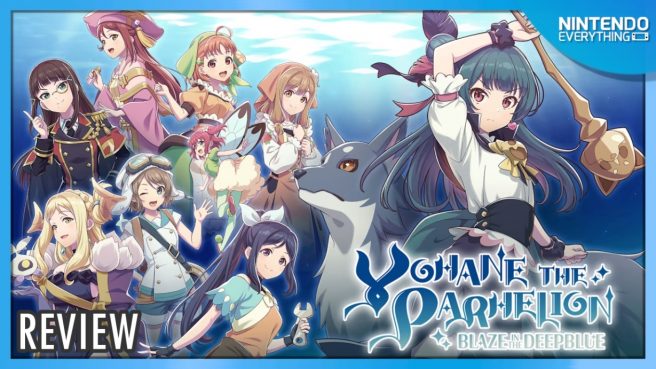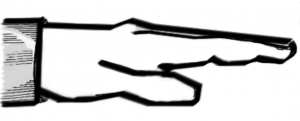[Review] Yohane the Parhelion: Blaze in the Deepblue
System: Switch
Release date: November 16, 2023
Developer: Inti Creates
Publisher: Inti Creates
Inti Creates has certainly earned a reputation for developing high quality 2D action titles having brought games such as Bloodstained: Curse of the Moon and its sequel as well as the Blaster Master Zero series to the Switch over the years. The studio’s latest game, Yohane the Parhelion: Blaze in the Deepblue, is based on a fantasy spinoff of Love Live! Sunshine!! The setting lends itself well to a video game and it has a solid foundation that makes it fun while it lasts, but unfortunately it doesn’t capitalize on this enough to make it any more than a middling experience at best.
Yohane the Parhelion is very light on story, with Yohane and friends exploring a mysterious new dungeon that has appeared on the outskirts of Numazu. Separated from her friends, who ventured into the labyrinth and didn’t return, Yohane and her companion, Lailaps, need to dive into the dungeon themselves to rescue everyone else, and in the process try and discover the mysteries surrounding it. Even if you’re not familiar with Love Live! Sunshine!! Yohane is an engaging protagonist with an almost embarrassingly cheesy and quirky personality that is on full display in every line she says in cutscenes and her callouts in game when she attacks. Although her interaction with the rest of the cast is brief and never enough for those unfamiliar with them to get a sense of their relationships or even their personalities, this is clearly a game designed with the fans in mind, and there is more than enough here to satisfy those who know the characters. The story serves more as a vehicle for the gameplay, with the interaction being an added bonus or fanservice rather than the focal point of the game.
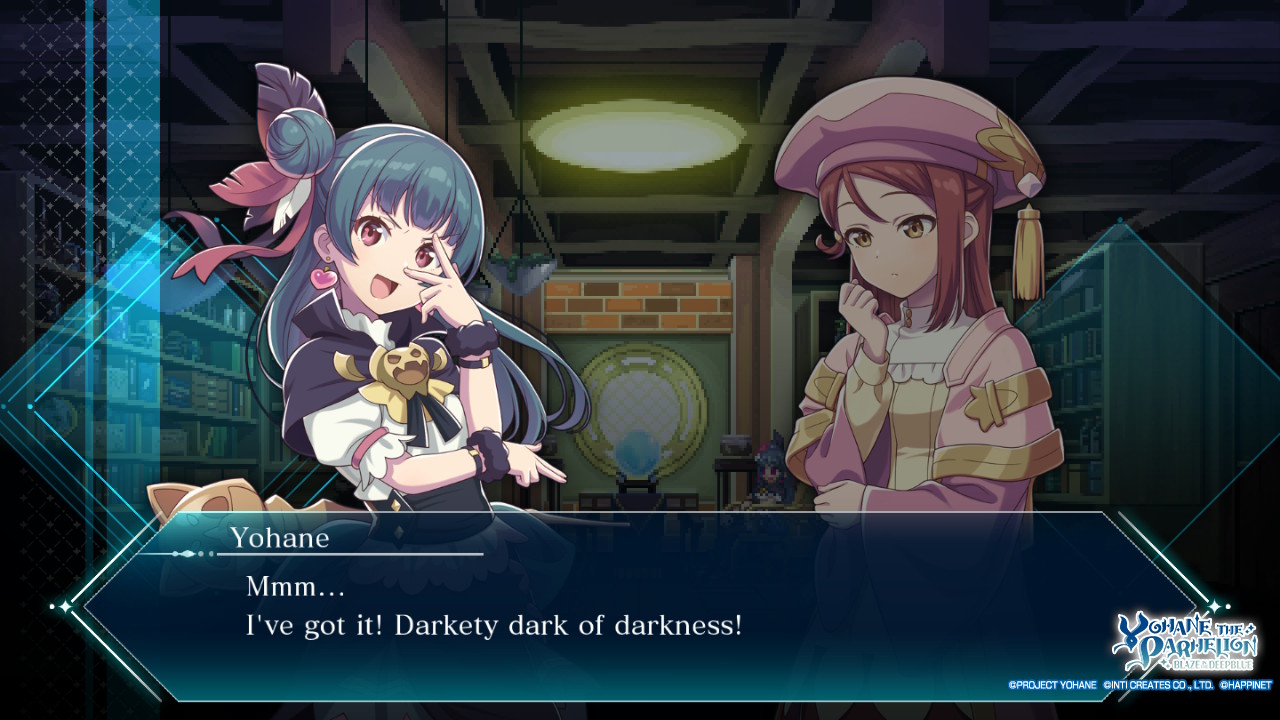
Yohane the Parhelion is a 2D Metroidvania, and if you’ve ever played one in the past you’ll find no surprises here. As Yohane you’ll be traversing a series of interconnected areas, defeating enemies and engaging in some very light platforming, in order to find your missing friends, who are guarded by boss battles that you’ll need to overcome. You’re free to explore as you see fit, but the game will indirectly guide you along the correct path by placing obstacles in your way that will require abilities you’ll acquire later in the game.
The game is very by-the-numbers, and while this is not necessarily a bad thing as the controls are tight and responsive and it never throws any particular frustrating puzzles, platforming sections, or bosses at the player, it is noticeably lacking in the challenges and hidden secrets that have become the hallmark of the genre, which is something players looking for a little more than a very basic experience will want to consider. Yohane the Parhelion feels like it was designed with those unfamiliar with the genre in mind: most enemies can be defeated in one or two hits, and although bosses take substantially more punishment, generally attacking them and avoiding their attacks in return is enough to secure victory.
Once you’ve saved one of Yohane’s friends, you’ll gain the ability to utilize their unique ability, which will allow you to explore more of the dungeon. These abilities have very limited application, but are useful across the entire dungeon and are quite charming for their animations: for example, You will fire Yohane out of a cannon to clear gaps she can’t clear by jumping, and Hanamaru rolls across the screen at high speeds to destroy spikes, getting dizzy when she collides with something. These can also be upgraded into stronger versions by finding unique items in sidequests of sorts, giving you a little more interaction with the characters that fans of the series will no doubt appreciate. The standard upgrades for traversal, such as double jumping and climbing, can be found scattered throughout the dungeon, making these abilities feel more like added rewards for progression.
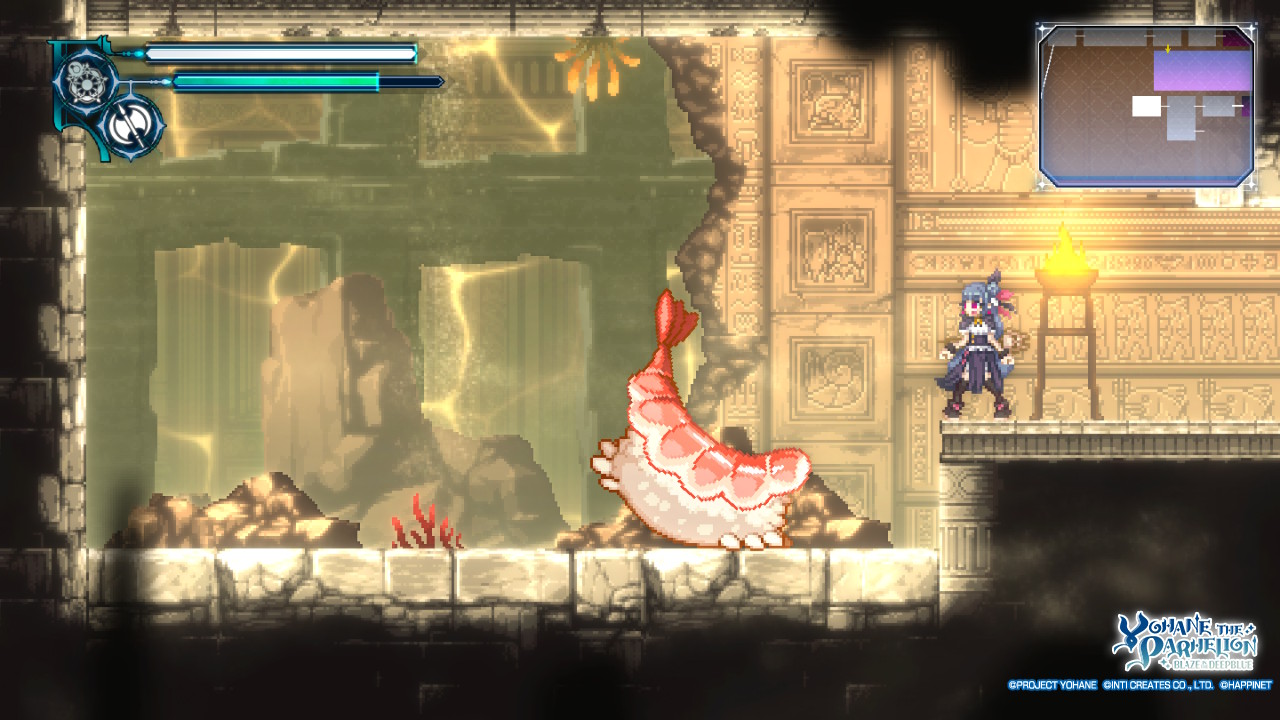
Although you can use your comrades to attack and defeat enemies, this is generally quite awkward, as their attacks are slow, difficult to aim properly, and clearly designed more for environmental puzzle solving than combat. Instead, the game encourages you to create your own equipment through the Cast system, which utilizes the items dropped by defeated enemies. There are a wide variety of weapons with the usual benefits and drawbacks: weaker weapons are faster and have a lower Darkness Point (DP) cost, and stronger weapons are slower with a higher cost. What weapon you use largely comes down to personal preference, as the game is notably lacking in challenge and enemies don’t have any particular weaknesses to speak of. The level of freedom here is nice, although I generally found that using the strongest weapon I had was the better choice because of the huge health pools of bosses.
The Cast system is an interesting way of acquiring new weapons that makes fighting enemies feel rewarding and loot drops are prevalent so you don’t need to spend hours grinding an enemy just for a new weapon, but unfortunately although the game will tell you exactly what you need to make a particular piece of gear and will even give you an on-screen alert to tell you when you can craft something new, it doesn’t tell you where you can find the items you’re missing. This makes the whole system feel somewhat arbitrary and lacking in focus, especially when many enemies will drop the same type of loot, and there often is no sense of progression thanks to the open-ended nature of the map. A lot of stronger weapons and armor need items you would have been getting near the start of the game, which keeps them relevant, but it also means for a lot of the game you’ll be one or two items short of creating something, which leads to the question of whether you haven’t been to the right area yet or whether you just haven’t had the right drop from the enemies.
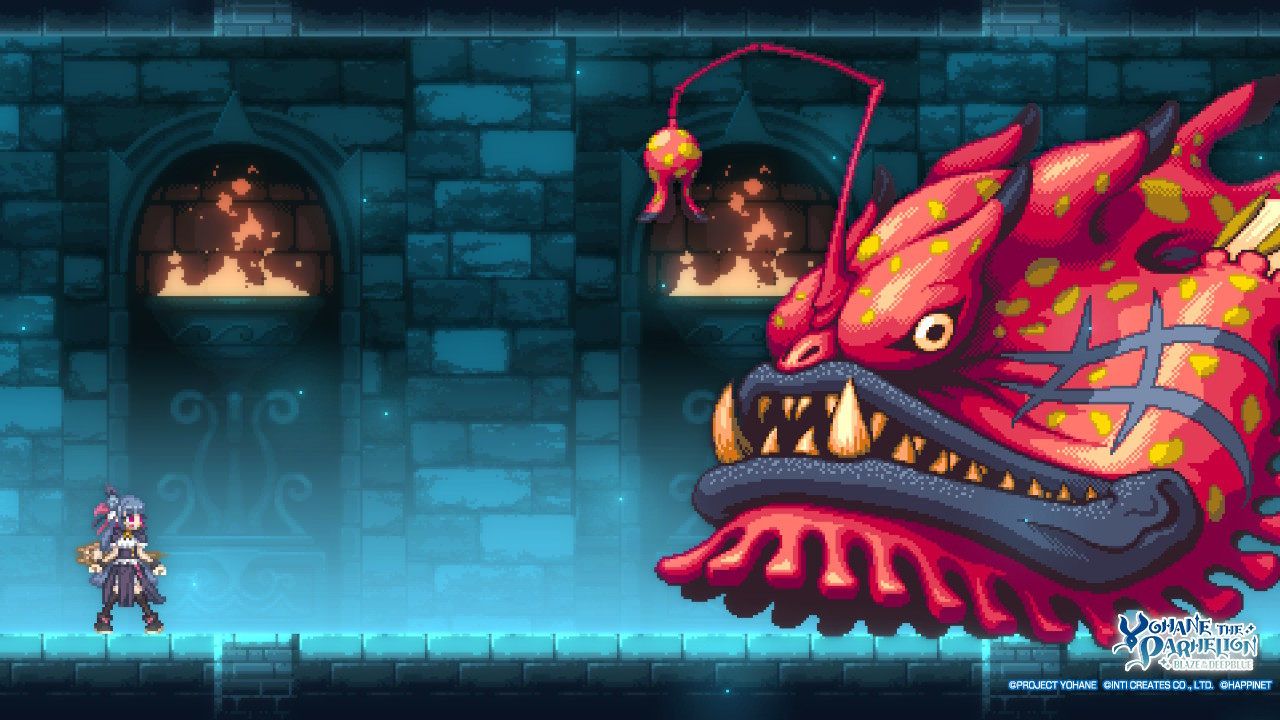
Yohane the Parhelion is a much more accessible game than many Metroidvanias with generously spaced Save Rooms that you can fast travel to at any time. This was a feature I appreciated enormously during my playthrough, as it cut back on a lot of needless backtracking; finding areas I was unable to progress due to lacking the required ability was a common occurrence. It also made revisiting areas later to acquire treasure chests that I was previously unable to reach much easier: the game marks these on the map when you enter a room, but it never tells you exactly where in the room they are, letting you have the fun of discovering its secrets without wasting time trying to find out whether the room you’re in actually has any secrets to find.
The game features an attractive pixel art style with more emphasis placed on the character animations than the backgrounds, although each area feels distinct enough that you’ll get the sense of entering a new biome, with the backgrounds giving a unique aesthetic for each area. Bosses have equally unique and memorable (although sometimes bizarre) designs. Unfortunately though, there is a lot of repetition and recoloring of enemies between areas with the same attack patterns, which makes the game feel quite repetitive over extended play sessions. Dialogue makes use of anime stills and occasional cutscenes, which are of a much higher quality and fit the anime theme of the game.
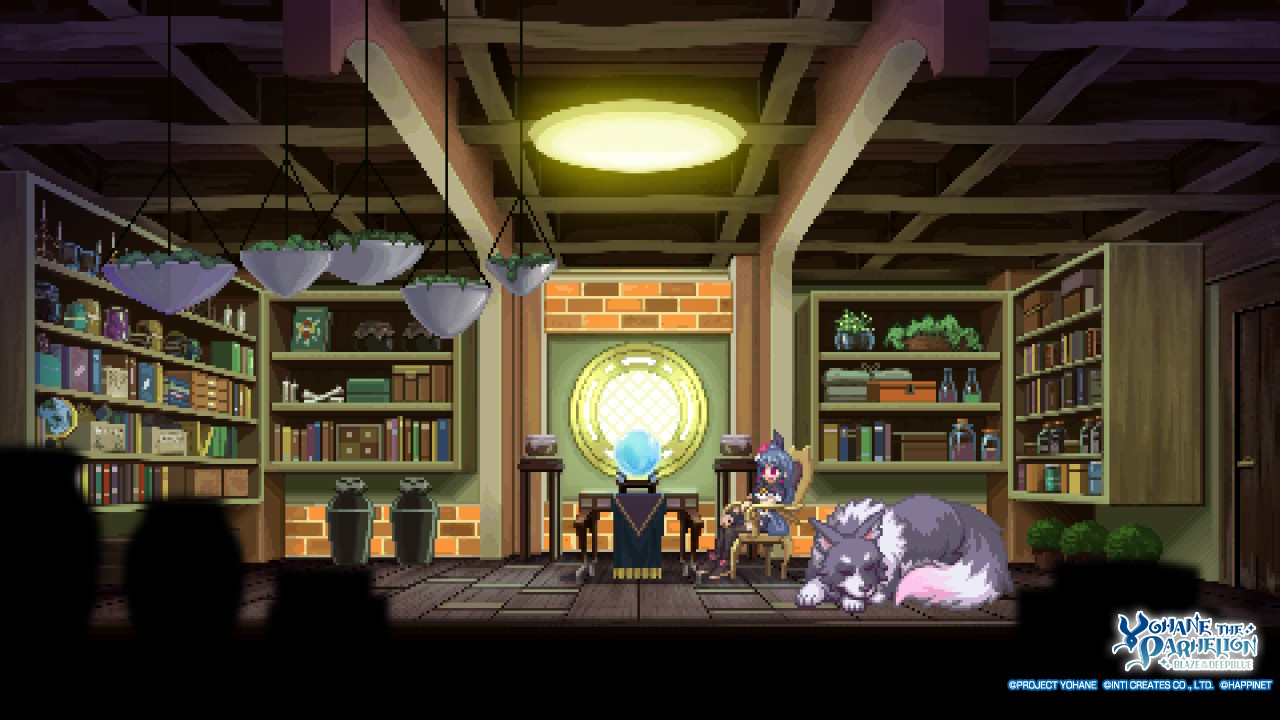
Sound design in Yohane the Parhelion is excellent, with some highly memorable and catchy area themes that stuck in my head long after I’d left the area in question. The game is also fully voiced in Japanese with the voice cast from the anime reprising their roles. There isn’t a lot of dialogue in the game, but this makes it feel high quality, and for fans there is also a new song, Deep Blue, which serves as the game’s theme.
Yohane the Parhelion is an extremely short game, and I was quite surprised when I was done with my playthrough within five hours, even after having scoured the map for hidden items and collectibles. Beyond creating every possible item for the sake of personal satisfaction, there isn’t anything to do in the game once you’ve finished the story and completing the game doesn’t unlock any extra features or higher difficulty levels. This notable lack of replayability makes the price point feel especially steep: unless you’re a huge fan of Love Live! Sunshine!! then you aren’t going to be getting your money’s worth here when compared to other titles that offer more on a first playthrough and have added replayability beyond that.
The Verdict
Yohane the Parhelion: Blaze in the Deepblue is a competent game that does very little to elevate itself from its contemporaries with a lack of variety in enemy design, simple environmental puzzles, and a lack of replayability make this feel like a lot of wasted potential. Its sole defining feature is its Love Live! Flavoring, and for fans of the anime that is likely going to be more than enough to convince them to pick this up, but if you’re not familiar with the source material, there isn’t really anything here to recommend this over similar titles, especially considering the amount of content for the price point.
Yohane the Parhelion: Blaze in the Deepblue copy provided by the publisher for the purposes of this review.
